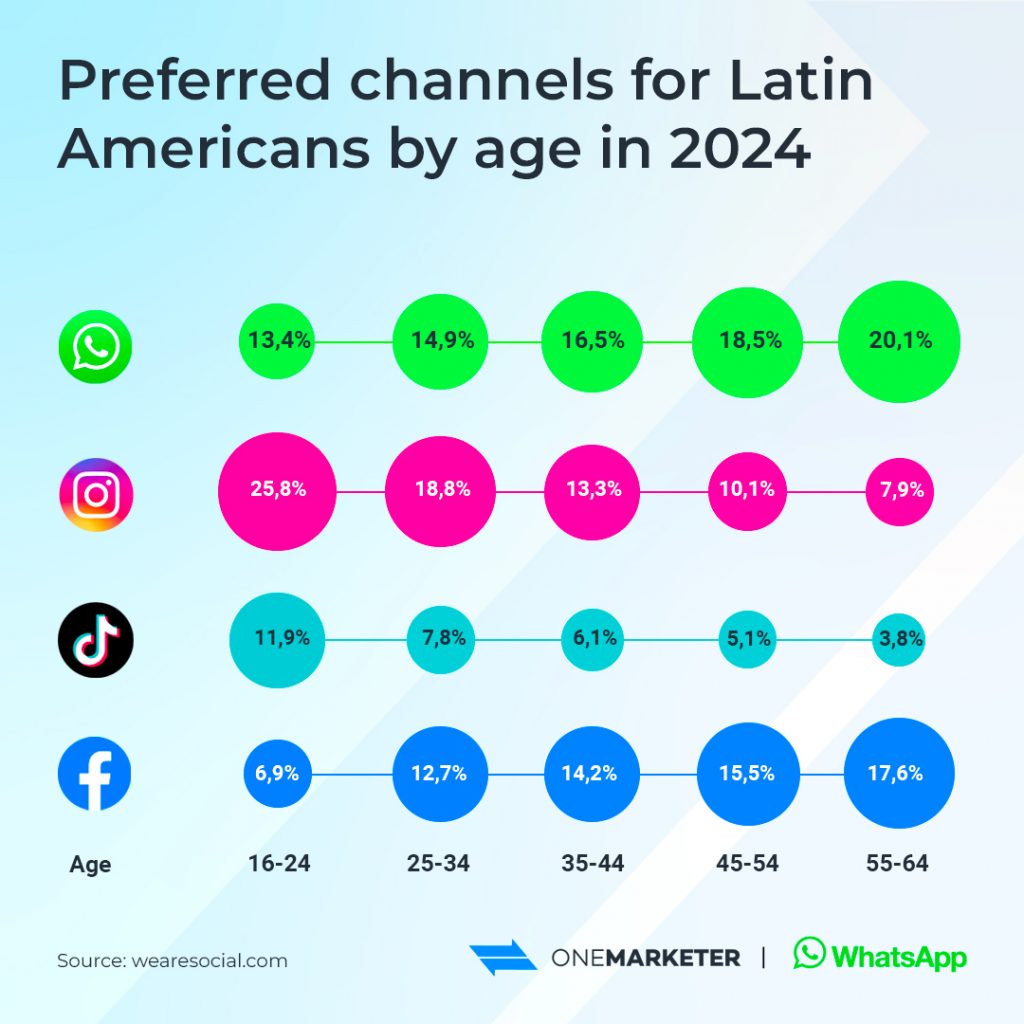-
Uncategorized
- Reading time 3 min
Technology and customer service: how to adapt to each generation
Customer service is not the same for everyone. Adapting the digital contactability strategy, taking into account age segmentation or segmentation by generation, by channel, is a key factor that we cannot overlook.
Both to choose the channels where to put the most effort, according to the brand’s audience, and to adapt communications, it is necessary to adapt to the needs, interests and tools of users in order to offer a positive and memorable customer service experience.
To give you an idea, we share below the digital channels and their preference according to the age generation of users:
TikTok
This platform is loved by Generation Z (1997-2012), known for turning to this social network as a source of entertainment and information and their constant search for identification. Although not exclusive to this generation, a significant percentage of Millennials (1981-1996) have also joined the TikTok wave because of its convenience and efficiency. These generations are looking for quick and concise answers, key to capture their attention, through the observation of content, comments to them or by direct message.
Instagram presents itself as the most curious scenario in our list, where generations X (1965-1980), Millennials (1981-1996) and Z (1997-2012) converge. Both generations tend to research and solve problems themselves before turning to customer service. Its forms of interaction are similar to TikTok, but it is important to remember that it is part of the Meta group, so it has interesting synergies with Facebook and WhatsApp.
Facebook has become the home par excellence of Generation X (1965-1980), who have adopted it as their main social network. They have been joined by the Baby Boomers (1946-1964), who, being pioneers in the digital world, found in Facebook a familiar and comfortable space to regain a sense of community. Baby Boomers value detailed and personalized customer service. Accessibility and direct assistance are key to gain their loyalty. In addition, the Messenger chat service is leveraged on this social network, so it is also possible to interact via direct message or comments to the content as in the previous ones.
WhatsApp has become the intergenerational attention channel par excellence. Whether to talk to friends, family or companies, its use has spread to all ages. It allows a close and direct interaction with your customers, similar to the one they have with their loved ones. In addition, Meta has put its biggest chips in generating interaction tools to personalize messages and share content for both customer service, marketing campaigns and even native e-commerce.
While Generation Z (1997-2012) is the one that uses it the most, we cannot underestimate the 40% of Baby Boomers (1946-1964) who have also adopted it as a means of communication with companies. Although in between, 80% of people aged 34 to 44 also take advantage of its benefits.

As we can see, it is essential that companies adapt their customer service contact strategies to meet the diverse preferences and needs of each age segment, using a combination of digital and traditional channels. This ensures a positive and effective customer experience for all generations.
Through our customer care solutions via human agent (social cx) or automated (bot manager), you can jumpstart your business and deploy a highly effective multichannel digital strategy in these social networks.
Would you like to learn more about this topic or our solutions? Write us at info@onemarketer.net and one of our specialized consultants will contact you as soon as possible.
